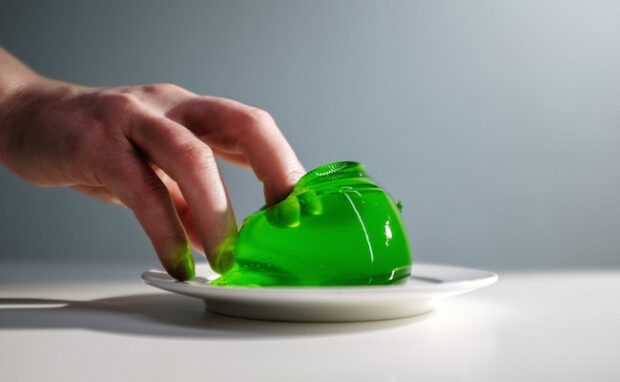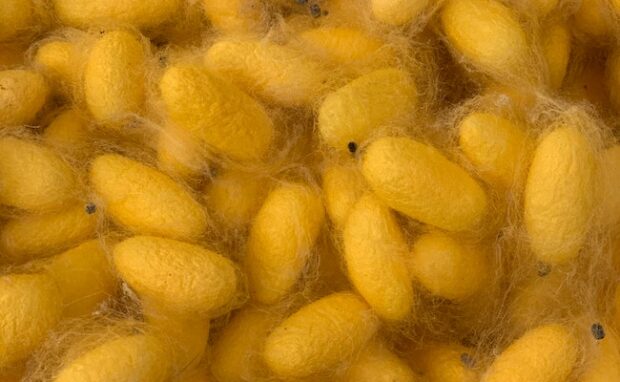Hydrogel could replace animal-derived materials
University of New South Wales researchers created a new material that could shift how laboratories grow human tissue. It could reduce, or even replace, the number of animals used in scientific research. More importantly, the research team hopes it could remove the need for animal-derived materials to preserve more creatures.
Laboratory research often uses rats and other animals for testing. We have been reducing our reliance on these critters, but many projects still require experimentation on animals. Fortunately, the Australian scientists’ new hydrogel may become an alternative to live creatures. Later, it might help create alternatives to materials like leather.
This article will discuss how South Wales scientists created a highly advanced hydrogel. Later, I will cover other projects producing new alternative materials.
How did the Sydney scientists create the hydrogel?

Ashley Nguyen, the first author of the hydrogel paper, did not intend to create the new material. She discovered it accidentally during the COVID-19 lockdown using computer simulations.
The chemistry Ph.D. student searched for molecules that self-assemble and stumbled upon the concept of “tryptophan zippers.” These are short amino acid chains with multiple tryptophans that act as a zipper to arrange themselves automatically.
The researchers dubbed it “Trpzip.” The lead researcher said, “I was excited to identify a unique peptide sequence using computational simulations that might form a hydrogel.”
“After we returned to the lab, I synthesized the top candidate and was thrilled to see it actually form a gel,” Nguyen added.
Associate Professor Kris Kilian and Dr. Shafagh Waters tested the viability of Trpzip in biomedical research. Also, they compared the latter’s Matrigel to the new hydrogel.
Matrigel is another hydrogel type harvested from mouse tumors used for the culture of research tissue. “Matrigel has some disadvantages in research use because every batch is different. A chemically defined alternative could be cheaper and more uniform, which would prove highly beneficial to biomedical research,” said Dr. Waters.
Both scientists concluded that Trpzip could be a promising contender in the billion-dollar natural materials industry. Consequently, they are exploring commercialization methods, and they said:
“We think that Trpzip hydrogels and materials like it will provide a more uniform and cost-effective alternative to animal-derived products. It would be a tremendous outcome if our material reduced the number of animals used in scientific research.”
Nguyen believes it could be an ethical alternative to animal-derived materials. “Natural hydrogels are used all over in society—from food processing to cosmetics—but require harvest from animals, which poses ethical concerns,” she stated.
What are other projects that explore alternative materials?

Chinese scientists have also been developing alternatives to consumer materials. For example, Junpeng Mi, a Donghua University biotechnologist, placed a specific gene into silkworms to enable them to produce spider silk.
This breakthrough is the first time scientists have combined the benefits of silkworm and spider threads after years of research. People have been using silkworm cocoons for centuries, but they break easily.
On the other hand, spider silk is strong, flexible, and durable, but these six-legged critters are difficult to cultivate. Keep 100 of them in a confined space, and they will eventually attack each other until you only have two left.
In contrast, 100 silkworms will peacefully stay in a factory. Mi reaped their benefits and none of the risks by taking the MiSp gene from the Araneus ventricosus or large nocturnal spider.
Then, he inserted MiSp into the silkworm gene. As a result, the experimental silkworms produced fibers with high strength, which measures the amount of stress a material can withstand without deforming.
Also, they have high toughness, which estimates how much energy they can absorb through stretching before rupturing. Meanwhile, a US-based professor discovered how to use coffee grounds for 3D printing.
Assistant Professor Micheal Rivera mixed the coffee with xanthan gum, water, and cellulose. Then, he modified his 3D printer to accept his coffee paste.
Rivera created flower pots with his new material, which turned out to be surprisingly durable. He said it was as strong as unreinforced concrete, not breaking even when dropped.
Adding activated charcoal helped the material conduct electricity. Also, the researchers believe it is a promising green material because it decomposes after an extended period.
Conclusion
University of New South Wales experts created a hydrogel that could help replace animal-derived substances. It could mimic human tissue to facilitate the production of synthetic substances.
The hydrogel may also replace these substances instead, opening the way for a new consumer material. Hence, “the team is keen to explore pathways to commercialization.”
Gain more information about this hydrogel study at the Nature Communications website. Learn more about the latest digital tips and trends at Inquirer Tech.